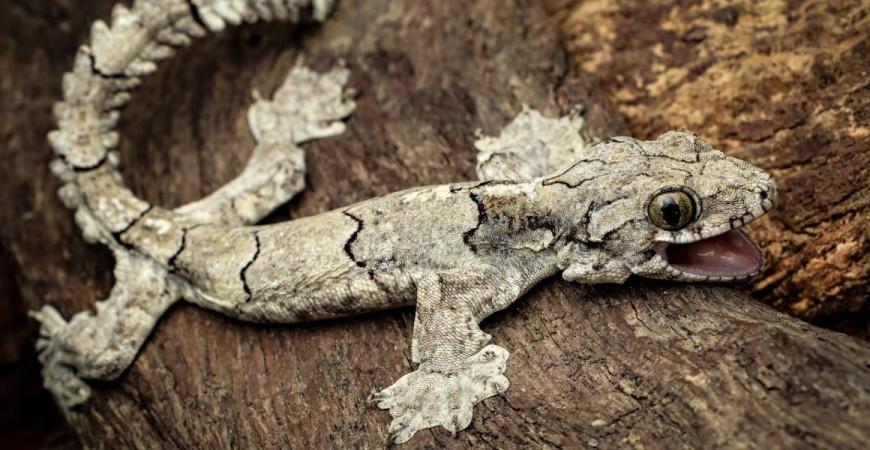At a time when reports about the extinction—or its imminence—of numerous species of fauna have become commonplace, the uncovering of new ones is a welcome change. Providing such news, scientists have announced the discovery of a new species of gecko in India.
Named after the Indian state that it was discovered in, Gekko mizoramensis, or the Mizoram parachute gecko, is one of the only 14 species of geckos known to have the ability of flight. It was found by a team of researchers from the Max Planck Institute for Biology and Mizoram University along the Indo-Myanmar border
"The wildlife of northeast India isn't as well known as it could be because of the amount of dense forest. While recent development has opened up access, forest clearance endangers its biodiversity," said Zeeshan Mirza, a PhD student and corresponding author of the study, in a statement. The findings were published in the journal Salamandra.
One of the Oldest Group of Lizards

Geckos are amongst the oldest surviving reptilians and are said to be one of the earliest evolving squamates—a group that comprises lizards, snakes, and amphisbaenians. Their ancestors first appeared in fossil records during the Jurassic Period (200 million to 146 million years ago). Today, there are over 1,500 species of geckos across the world.
Based on genetic studies and fossil analysis, it is believed that geckos developed some of their characteristic features about 100 million years ago. They possess adhesive toe pads, which have a network of microscopic hair-like structures called setae, that aid them in climbing any surface. Geckos can shed their tails as a defense mechanism to distract predators and regenerate them. With several species being nocturnal, geckos have also evolved the ability of night vision.
Learning to Take Flight

While flying geckos (also known as gliding geckos or parachute geckos) were classified as a group of their own, they were recently categorised as a specialised branch of Gekko, a genus of Southeast Asian geckos, also known as 'true geckos'. The genus evolved around the same time as dipterocarps, a group of rainforest trees that began evolving about 102 million years ago in Africa and made their way to India around 70 million years ago.
In comparison to other gliding reptiles such as flying dragons (Genus Draco), where the flying surfaces are formed around bones, flying geckos have flaps of skin between their limbs. When these lizards take off from elevated structures, the flaps extend to their fullest extent due to air resistance, functioning like a parachute. This reduces their falling speed effectively.

Coupled with their webbed feet and flattened tails, the flaps provide the geckos with steering capability while moving in the air and landing on their targets. Also, the skin flaps help geckos distort their shape, thereby providing camouflage against predators.
Promise of More Discoveries
The specialised form and concealment abilities are shared by several species of geckos, giving rise to a complication: it becomes challenging to discern between species. Although a specimen of Gekko mizoramensis was collected in 2001, the features distinguishing it from its relatives were not noted and it was misidentified as a member of another species, Gekko lionotum.

Gekko mizoramensis was identified as a seperate species only after a genetic analysis and a closer observation of minimal differences in colouration and size. The team captured the specimens analysed in the current study by hand when the lizards foraged for bugs just before nighttime.
According to the researchers, Gekko mizoramensis is likely to have evolved from its closest relative, Gekko popaensis, as a result of being separated from it by the Arakan Mountains in western Myanmar. Numerous species of lizards are known to exist in this region. The team suggests that several new species of geckos may be discovered in India and in areas bordering Myanmar and Bangladesh, and recommended the conducting of more research.
"Most research in the past has focused on charismatic fauna such as birds and mammals, leaving reptile species underexplored. My own surveys of the region have uncovered several new species, including Salazar's pit viper, which is named after a character from Harry Potter. With additional fieldwork, I am confident that more new reptile species will be discovered in the region," concluded Mirza.















